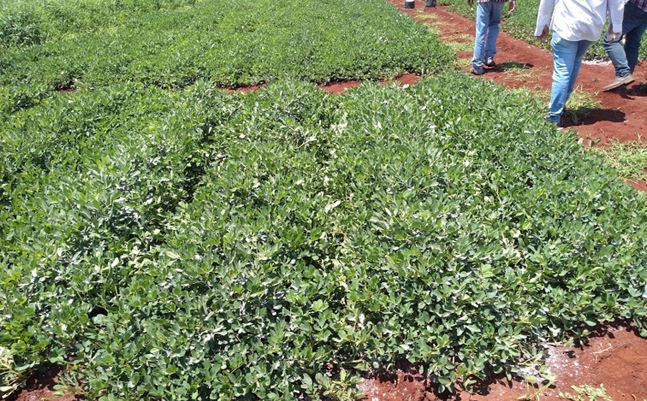Sulfur sources in the control of burrower bugs, Cyrtomenus mirabilis (Hemiptera: Cydnidae) in peanuts
DOI:
https://doi.org/10.17648/sas.v1i2.38Keywords:
Arachis hypogeae L., soil pest, gypsumAbstract
The burrower bug, Cyrtomenus mirabilis (Perty, 1836) (Hemiptera: Cydnidae) is the main soil pest in peanuts. Its main damage is related to the attack on pods during the development phase of the kernels. Nymphs and adults insert the stylet of their oral apparatus, reaching the developing grains. There is a hypothesis that sulfur may be useful as an insecticide and / or repellent for this peanut pest. The objective of this research was to identify possible sources of sulfur capable of repelling or controlling the burrower bug, then reducing the damage. For this, two experiments were installed at Apta Centro Norte in Pindorama, SP, and at Sugarcane Research Center / IAC in Ribeirão Preto, SP. The experiments were installed in a randomized blocks with eight treatments, and four replications. At the end of the peanut growth cycle, the number of insects per trench was counted and the damage caused by them in the different treatments was evaluated. In Pindorama, the low occurrence of the insect prevented comparisons. In Ribeirão Preto it was possible to observe differences between treatments. Based on the results obtained in the Ribeirão Preto experiment, it can be concluded that: The use of sulfur reduces the damage caused by the black bug by over 25%; Sulfurgran B-Max at a dosage of 70 Kg ha-1 applied into the sowing furrow associated with gypsum at a dosage of 1,000 Kg ha-1 at 92 DAS reduces the population and damage by C. mirabilis in peanut.
Downloads

Downloads
Published
How to Cite
Issue
Section
License
Autores concordam com os seguintes termos:
a) Os autores mantêm os direitos autorais e concedem à revista o direito de primeira publicação, com o trabalho simultaneamente licenciado sob a LicençaAttribution-NonCommercial-ShareAlike 4.0 International, que permite o compartilhamento do trabalho com reconhecimento da autoria e publicação inicial na Revista SAS. A licença permite o uso, a distribuição e a reprodução irrestrita, em qualquer meio, desde que devidamente citada a fonte. Essa licença permite também que outros remixem, adaptem e criem a partir do seu trabalho para fins não comerciais, desde que atribuam a você o devido crédito e que licenciem as novas criações sob termos idênticos.
b) Não cabe aos autores compensação financeira a qualquer título, por artigos ou resenhas publicados na South American Sciences.
c) Os conceitos expressos nos artigos publicados na South American Sciences são de inteira responsabilidade de seus autores.








